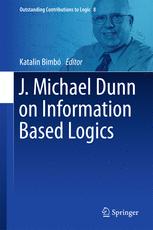

Most ebook files are in PDF format, so you can easily read them using various software such as Foxit Reader or directly on the Google Chrome browser.
Some ebook files are released by publishers in other formats such as .awz, .mobi, .epub, .fb2, etc. You may need to install specific software to read these formats on mobile/PC, such as Calibre.
Please read the tutorial at this link: https://ebookbell.com/faq
We offer FREE conversion to the popular formats you request; however, this may take some time. Therefore, right after payment, please email us, and we will try to provide the service as quickly as possible.
For some exceptional file formats or broken links (if any), please refrain from opening any disputes. Instead, email us first, and we will try to assist within a maximum of 6 hours.
EbookBell Team

4.3
88 reviewsThis book celebrates and expands on J. Michael Dunn’s work on informational interpretations of logic. Dunn, in his Ph.D. thesis (1966), introduced a semantics for first-degree entailments utilizing the idea that a sentence can provide positive or negative information about a topic, possibly supplying both or neither. He later published a related interpretation of the logic R-mingle, which turned out to be one of the first relational semantics for a relevance logic. An incompatibility relation between information states lends itself to a definition of negation and it has figured into Dunn's comprehensive investigations into representations of various negations. The informational view of semantics is also a prominent theme in Dunn’s research on other logics, such as quantum logic and linear logic, and led to the encompassing theory of generalized Galois logics (or "gaggles"). Dunn’s latest work addresses informational interpretations of the ternary accessibility relation and the very nature of information.
The book opens with Dunn’s autobiography, followed by a list of his publications. It then presents a series of papers written by respected logicians working on different aspects of information-based logics. The topics covered include the logic R-mingle, which was introduced by Dunn, and its applications in mathematical reasoning as well as its importance in obtaining results for other relevance logics. There are also interpretations of the accessibility relation in the semantics of relevance and other non-classical logics using different notions of information. It also presents a collection of papers that develop semantics for various logics, including certain modal and many-valued logics.
The publication of this book is well timed, since we are living in an "information age.” Providing new technical findings, intellectual history and careful expositions of intriguing ideas, it appeals to a wide audience of scholars and researchers.